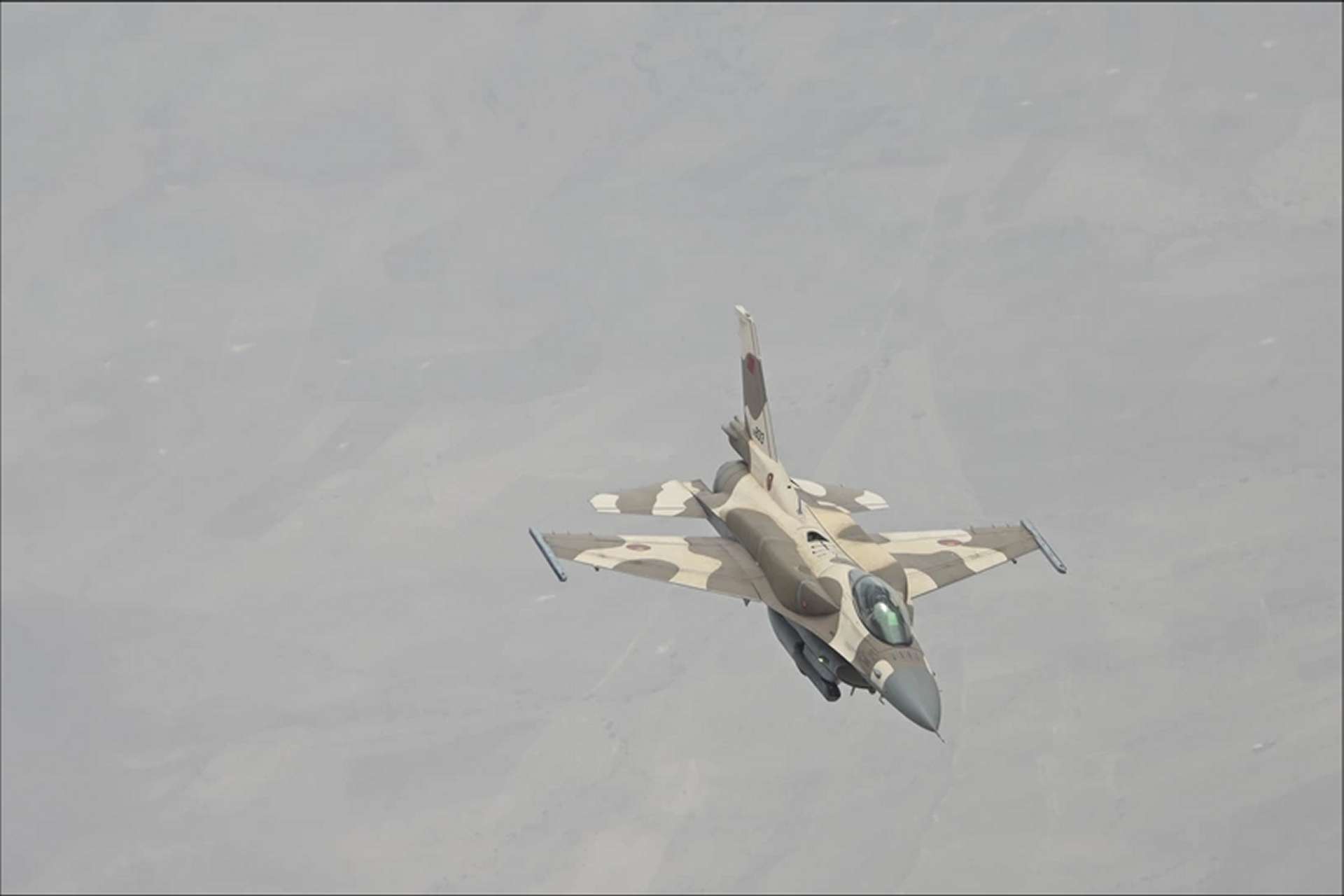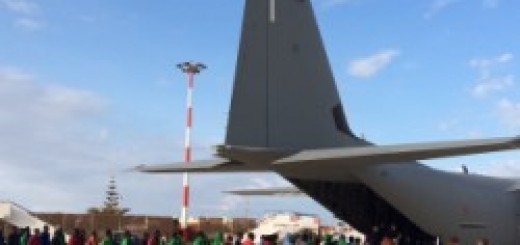Morocco Acquires Boeing Anti-Ship and Cruise Missiles for F-16 Fighter Jets

{loadposition bannertop}
Breaking news
{loadposition sidebarpub}
Morocco has acquired advanced American missile systems to equip its F-16 jets. According to a report by the Spanish newspaper La Razón, Morocco has procured Harpoon Block II (AGM-84L) anti-ship missiles and SLAM-ER (AGM-84H/K) cruise missiles from Boeing.Follow Army Recognition on Google News at this link
A F-16 fighter jet from the Royal Moroccan Air Force. (Picture source: US DoD)
These acquisitions aim to enhance the capabilities of the Royal Moroccan Air Force, particularly with the integration of Harpoon missiles into the F-16 Viper fighter jets. The Royal Armed Forces are expected to receive 24 of these advanced jets by 2026.
The Harpoon Block II missiles, equipped with a 525 kg explosive warhead and a range of up to 280 km, represent the latest generation of anti-ship weaponry. Technical reports indicate that these missiles can precisely destroy floating targets and enemy naval assets, including aircraft carriers and landing ships.
In addition to the anti-ship missiles, Morocco has also acquired medium and long-range cruise missiles designed for high-precision strikes on land and sea-based targets. These advanced weapons further enhance Morocco’s military capabilities.
The F-16 Fighting Falcon, initially developed by General Dynamics and now manufactured by Lockheed Martin, is a multirole aircraft still in service. Its first flight took place on February 2, 1974, and it was officially commissioned on August 17, 1978. As of April 25, 2019, 4,588 units had been built. The aircraft is powered by a Pratt & Whitney F100-PW-229 turbofan engine, producing 79 kN of thrust without afterburner and 130 kN with afterburner.
The F-16 features compact dimensions with a wingspan of 9.8 meters, a length of 14.8 meters, and a height of 4.8 meters, providing a wing area of 27.87 m². Its empty weight is 8,272 kg, while it can reach a maximum weight of 16,900 kg when fully loaded. In terms of performance, the F-16 can achieve a maximum speed of 2,173 km/h (Mach 2.04) and has an operational ceiling of 15,200 meters. Its climb rate is impressive, reaching 15,240 meters per minute, and it has a range of 550 km. The aircraft’s wing loading is 431 kg/m² and its thrust-to-weight ratio is 0.90.
The avionics of the F-16 are particularly advanced, including fly-by-wire controls, a head-up display, and a HOTAS (Hands On Throttle-And-Stick) system. Successive versions of the F-16 have seen the integration of increasingly sophisticated radars, from the AN/APG-66 to the AN/APG-83 active electronically scanned array (AESA) radar. The aircraft is also equipped with a forward-looking infrared (FLIR) radar, an ALR-56M radar warning receiver, GPS, Link 16 for secure communications, and an AN/ALQ-131 electronic warfare pod for jamming and defense missions.
During a recent meeting, the Council approved draft organic laws and decrees aimed at strengthening the military sector, reflecting Morocco’s unwavering commitment to improving its defense capabilities. The high-level discussions, led by the King, underscore the strategic importance placed on the development of the country’s defense industry.
This acquisition is part of Morocco’s broader strategy to modernize its armed forces and assert control over its maritime domain. Last week, King Mohammed VI chaired a Ministerial Council meeting that marked a step toward Morocco’s autonomy as a defense manufacturer.

{loadposition bannertop}
Breaking news
{loadposition sidebarpub}
Morocco has acquired advanced American missile systems to equip its F-16 jets. According to a report by the Spanish newspaper La Razón, Morocco has procured Harpoon Block II (AGM-84L) anti-ship missiles and SLAM-ER (AGM-84H/K) cruise missiles from Boeing.
Follow Army Recognition on Google News at this link
A F-16 fighter jet from the Royal Moroccan Air Force. (Picture source: US DoD)
These acquisitions aim to enhance the capabilities of the Royal Moroccan Air Force, particularly with the integration of Harpoon missiles into the F-16 Viper fighter jets. The Royal Armed Forces are expected to receive 24 of these advanced jets by 2026.
The Harpoon Block II missiles, equipped with a 525 kg explosive warhead and a range of up to 280 km, represent the latest generation of anti-ship weaponry. Technical reports indicate that these missiles can precisely destroy floating targets and enemy naval assets, including aircraft carriers and landing ships.
In addition to the anti-ship missiles, Morocco has also acquired medium and long-range cruise missiles designed for high-precision strikes on land and sea-based targets. These advanced weapons further enhance Morocco’s military capabilities.
The F-16 Fighting Falcon, initially developed by General Dynamics and now manufactured by Lockheed Martin, is a multirole aircraft still in service. Its first flight took place on February 2, 1974, and it was officially commissioned on August 17, 1978. As of April 25, 2019, 4,588 units had been built. The aircraft is powered by a Pratt & Whitney F100-PW-229 turbofan engine, producing 79 kN of thrust without afterburner and 130 kN with afterburner.
The F-16 features compact dimensions with a wingspan of 9.8 meters, a length of 14.8 meters, and a height of 4.8 meters, providing a wing area of 27.87 m². Its empty weight is 8,272 kg, while it can reach a maximum weight of 16,900 kg when fully loaded. In terms of performance, the F-16 can achieve a maximum speed of 2,173 km/h (Mach 2.04) and has an operational ceiling of 15,200 meters. Its climb rate is impressive, reaching 15,240 meters per minute, and it has a range of 550 km. The aircraft’s wing loading is 431 kg/m² and its thrust-to-weight ratio is 0.90.
The avionics of the F-16 are particularly advanced, including fly-by-wire controls, a head-up display, and a HOTAS (Hands On Throttle-And-Stick) system. Successive versions of the F-16 have seen the integration of increasingly sophisticated radars, from the AN/APG-66 to the AN/APG-83 active electronically scanned array (AESA) radar. The aircraft is also equipped with a forward-looking infrared (FLIR) radar, an ALR-56M radar warning receiver, GPS, Link 16 for secure communications, and an AN/ALQ-131 electronic warfare pod for jamming and defense missions.
During a recent meeting, the Council approved draft organic laws and decrees aimed at strengthening the military sector, reflecting Morocco’s unwavering commitment to improving its defense capabilities. The high-level discussions, led by the King, underscore the strategic importance placed on the development of the country’s defense industry.
This acquisition is part of Morocco’s broader strategy to modernize its armed forces and assert control over its maritime domain. Last week, King Mohammed VI chaired a Ministerial Council meeting that marked a step toward Morocco’s autonomy as a defense manufacturer.






